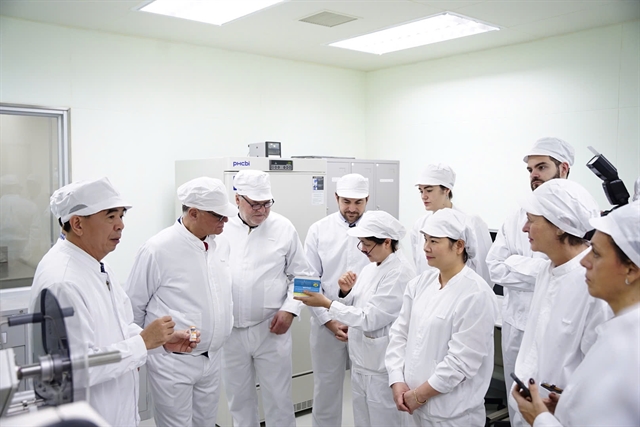 Society
Society

Two large-scale food poisoning cases last week put 500 students in the hospital and left parents concerned about food safety in the country’s schools.
 |
| Hundreds of students were hospitalised after having lunch at the Đinh Tiên Hoàng Primary School in Ninh Bình City. — Photo laodong.vn |
HÀ NỘI — Two large-scale food poisoning cases last week put 500 students in the hospital and left parents concerned about food safety in the country’s schools.
More than 350 students of the Đinh Tiên Hoàng Primary School in Ninh Bình City were hospitalised after eating lunch at school due to vomiting, fever and diarrhea – all symptoms consistent with food poisoning.
An investigation by the Vietnam Food Administration (VFA) concluded that a shredded chicken dish made by the school was contaminated with bacteria.
Last Tuesday, more than 170 students at the Xín Cái Boarding Primary School in Mèo Vạc District, Hà Giang Province were hospitalised for food poisoning after a school breakfast of sticky rice and chopped pork.
Nguyễn Như Chưởng, director of the Hà Giang Food Safety Department, said the pork was likely expired.
As of Monday, all of the students had been discharged and were under supervision at home.
A mother in Hà Nội’s Ba Đình District who wished to remain anonymous said all three of her children eat meals at school every day.
“I am really worried after reading about the food poisoning cases,” she said. “I immediately contacted my children’s school to ask about the quality of its meals.”
According to Cao Văn Trung, a VFA official, school food poisonings make up just 3.7 per cent of the total number of food poisoning cases.
Students have weak resistance, so getting food poisoning could have serious effects on their health.
Most food poisonings at schools happened in March and October.
“At that time the weather is humid which creates a good condition for bacteria to develop,” said Trung.
He also noted that it was hard to supervise the quality of school meals because of the number of companies that supply the food.
"Local authorities and schools do not pay much attention to the food safety standards of third-party suppliers," Trung said.
In earlier incidents at several primary schools, parents discovered that schools had brought in bad vegetables.
On September 12 last year, parents discovered a three-wheeled vehicle transporting low-quality food and vegetables to the Lý Nhân Primary School in Vĩnh Tường District, the northern province of Vĩnh Phúc.
On January 14, 2016, food from the Trung Thành Company was withdrawn at the Phú Thượng Primary School in Hà Nội’s Tây Hồ District. Investigations showed that the company often bought food at the Vân Nội Market in Đông Anh District and then wrapped it up to make it look like safe food.
Associate professor Nguyễn Thanh Phong, director of the VFA, said the Ministry of Education and Training and the Ministry of Health issued a circular with guidelines on food safety in schools this year.
“Regulations on safe meals for the children are clear in the circular,” said Phong. “If food poisoning happens, the principal of the school must bear the responsibility.”
Phong said different measures must be taken to limit the problem. Local authorities and schools must work together to supervise school meals.
Schools should have food safety supervision boards with the participation of teachers and parents. The heads of school kitchens must keep records of where their ingredients come from.
Inspectors should make regular checks on school kitchens and keep records so that, in the event of another food poisoning case, they can determine its cause. — VNS




